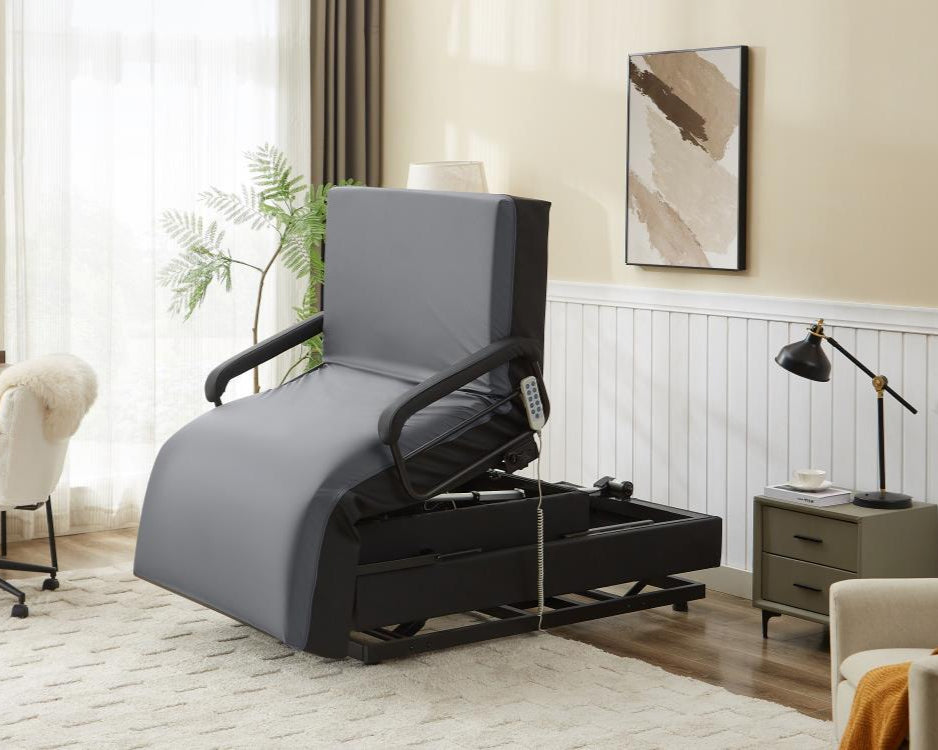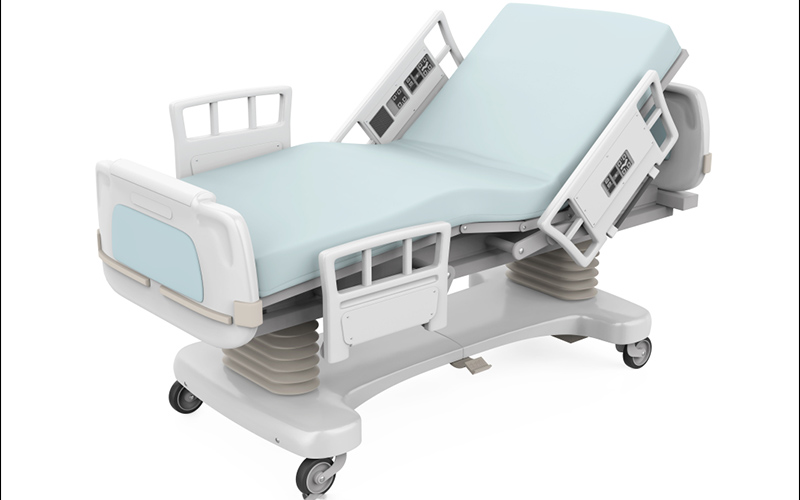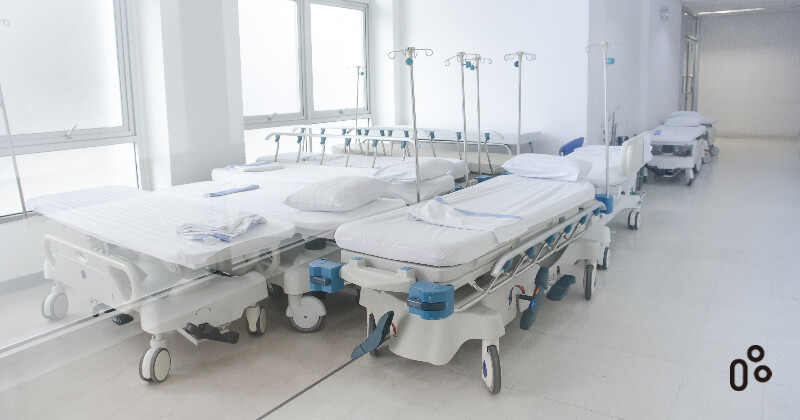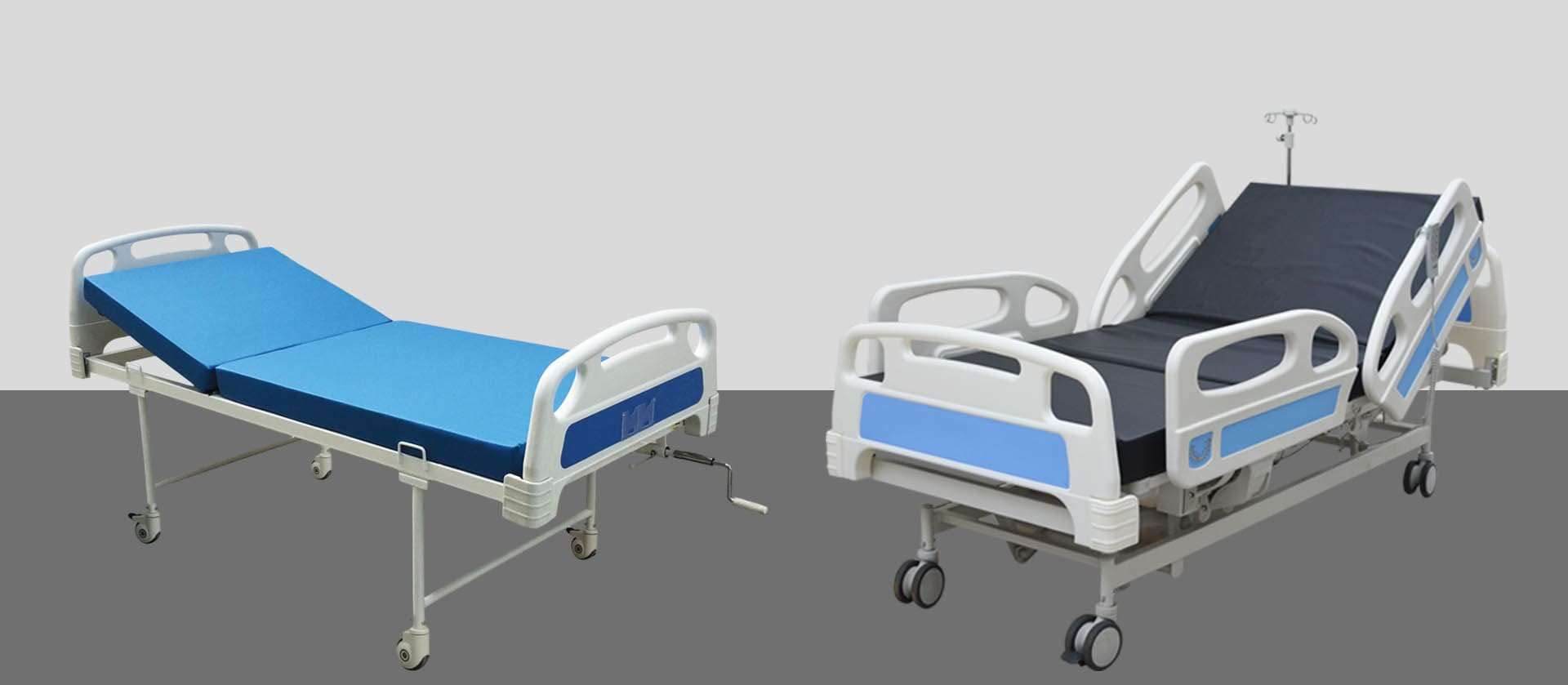More About Hospital Beds For Home Use
More About Hospital Beds For Home Use
Blog Article
How Hospital Beds For Home Use can Save You Time, Stress, and Money.
Table of ContentsAn Unbiased View of Hospital Beds For Home UseLittle Known Questions About Hospital Beds For Home Use.The Basic Principles Of Hospital Beds For Home Use Hospital Beds For Home Use Fundamentals ExplainedExamine This Report about Hospital Beds For Home UseMore About Hospital Beds For Home UseHospital Beds For Home Use - Truths
There are 3 major types of medical facility beds: handbook, semi-electric, and fully-electric. These beds make use of hand cranks to change the bed's elevation and elevate and reduce the head and the foot.
Semi-electric beds have an electrical motor to raise and reduce the head and foot portions of the bed. Patients and caregivers readjust the positioning by pushing buttons making use of a hand pendant. The elevation of the bed is adjusted manually with a hand crank. Full-electric beds have an electric motor that can elevate the head and foot sections of the bed in addition to the whole elevation and positioning of the bed.
Get This Report on Hospital Beds For Home Use
There are several types of hospital beds, each developed to fulfill particular client demands. Here are some typical kinds: This is the most usual kind of medical facility bed, developed for general clinical use.
Lower to the ground than a conventional bed. This type of bed is made for larger patients, with a broader frame and greater weight ability than a conventional bed.
This sort of bed is made for critically ill clients that need open tracking and specialized medical devices such as ventilators and infusion pumps. This type of bed is designed for usage during labor and delivery, with adjustable positions and features to sustain the mother and baby throughout the birth procedure.
Hospital Beds For Home Use Can Be Fun For Everyone
Numerous feature and the accessories perform expanding grip to various components of the vertebra and the extremities without relocating the body. These are just a few instances of the sorts of medical facility beds available. The certain sort of bed used will depend upon the person's condition, clinical demands, and various other variables.
Below is the important things you require to understand. A one-function hospital bed is a clinical bed that enables a patient to relocate only the head or foot area up or down. A 2 function health center bed typically describes a sort of clinical bed that has two flexible features to assist patients in hospitals or treatment facilities.

Some Known Details About Hospital Beds For Home Use
A 7-function ICU bed is a kind of clinical bed that gives several adjustable functions to support critically ill people in a critical care unit (ICU) (hospital beds for home use). The seven features generally include: Backrest adjustment: this website The backrest can be changed to different angles to assist the individual stay up or relax comfortably
Height adjustment: The bed can be increased or lowered to make it simpler for patients to obtain in and out of bed, and for caretakers to offer care. Trendelenburg setting: The whole bed can be slanted to advertise blood flow and blood circulation in the body. Reverse Trendelenburg setting: The bed can additionally be slanted in the opposite direction to promote blood flow and blood circulation in the top body.
1. What Size is a Healthcare Facility Bed? 2. Just how much Does a Health Center Bed Expense? 3. Why Do Healthcare Facility Beds Have Side Rails? 4. What Are The Main Health Center Bed Components?. While more budget-friendly than electrical models, these beds call for physical initiative for changes. The major advantages of manual beds are their price and dependability, as they do not depend on electricity. Nonetheless, the demand for manual effort can be a limitation in scenarios where quick modifications are needed or where caregivers face physical obstacles.
Hospital Beds For Home Use for Dummies
They are well-suited for individuals who need marginal rearranging for comfort or clinical needs. Semi-electric healthcare facility beds use an equilibrium of guidebook and electric controls. The head and foot sections are commonly readjusted with electrical controls, while the elevation is adjusted manually. These beds provide an ideal center ground in between guidebook and totally electrical choices, supplying convenience of usage without the complete cost of electric designs.
Semi-electric beds are well-suited for individuals that need moderate adjustments to the head and foot areas but can take care of without constant elevation modifications. This makes them a cost-efficient remedy for those looking for comfort and convenience without the demand for consistent repositioning. Completely electric hospital beds include electric controls for seamless adjustments to the elevation, head, and foot areas.
Specialty medical facility beds, such as ICU beds, long-term treatment beds, and bariatric beds, are meticulously developed to address details medical requirements. These beds provide customized care for diverse person teams, enhancing both results and convenience. In the following sections, we will certainly explore the major types of specialty health center beds, describing their specific advantages and applications.
With years of experience in manufacturing electrical direct actuators - hospital beds for home use and close cooperation with the health care market, TiMOTION is well-positioned to give trustworthy healthcare options. Our vertically integrated company takes care of every action of the manufacturing procedure, from style to actuator setting up, guaranteeing blog here we deliver phenomenal value and tailored solutions tailored to your details needs
Top Guidelines Of Hospital Beds For Home Use

To discover more click now regarding incorporating these modern technologies right into your items, contact us today. Additional analysis:.
Data is sourced from the Medicare Cost Record.

10 Easy Facts About Hospital Beds For Home Use Explained
A healthcare facility bed is a bed made especially for clinical functions. It is not only a place for clients to rest, yet likewise a platform for medical operations. Unlike ordinary home beds, hospital beds generally have flexible functions, which can assist in medical staff to make different changes according to the demands of individuals, such as changing the height, disposition, and support angle of the back and legs of the bed.
Report this page